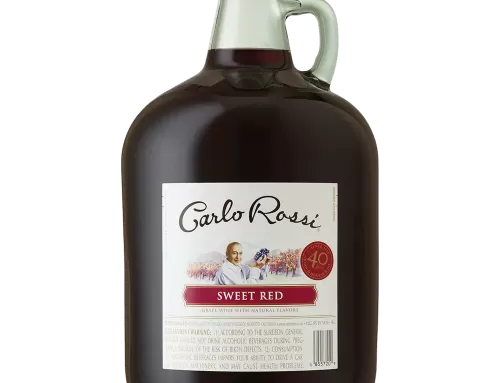I always find it curious that winemakers spend so much time, effort, and money to make the best wine that they possibly can. Then, in the very last step, many ruin a substantial percentage of the bottles by using a closure with a high failure rate.
But how big of a problem is cork taint really? Let’s break it down with some numbers.
In my experience tasting wines for review both here and when I was a contributing editor at Wine Enthusiast from 2013 to 2022, between 3-6% of wines I have tasted that were closed by natural cork showed signs of taint by TCA or some other moldy contaminant. (Read everything you ever wanted to know about cork taint.) These findings are largely consistent with those from the Cork Quality Council, which has found an average of 3% of corks contaminated by TCA.
Okay, 3%. That’s not great, but it could be worse right? 3% is actually really, really bad.
First, let’s look at it on a micro scale. Many wineries in the Pacific Northwest are small production. Say that a winery makes 500 cases of a particular wine. At a 3% contamination rate, that leads to 180 cork tainted bottles of that wine. Potentially 180 customers whose experience has been negatively impacted to a greater or lesser extent. If that winery makes 3,000 total cases annually, that’s 1,080 cork tainted bottles per year. Wow. As a small winery, can you really afford to potentially disappoint over 1,000 customers per year?
Now let’s look at it on a macro scale. The US consumes roughly 4.3B bottles of wine per year. Let’s assume 70% of those bottles are closed by natural cork. At a 3% taint rate, US consumers are opening up over 90M bottles of corked wine per year. That’s over 247,000 TCA-tainted wines opened per day, just in this country! That, my friends, is a very, very serious problem.
Why do wineries allow this problem to persist? There are a variety of reasons I have written about before.
Some wineries, especially ones making higher tier wines, think that this problem does not apply to them. They think that they are taking sufficient steps to reduce the problem, checking bales, using higher grade corks, or even using individually tested corks. Or perhaps they think that cork taint is just a problem in inexpensive wines using lower quality corks. These assumptions are, unfortunately, completely false.
I’ve talked to wineries that test every bale of cork they use. Frankly, I do not see significant differences in the percentages of corked wines I receive from these wineries compared to other wineries. I know wineries that use individually tested corks (by human or machine). I see plenty of tainted bottles from those producers too, much to their exasperation.
Additionally, in my experience, cork taint has nothing whatsoever to do with wine price. One year, the average price of a bottle of cork tainted wine I sampled was $48. No one thinks that’s an inexpensive bottle.
Many producers also think that the size and scope of the problem is much smaller than it is. I’ve had some say the cork taint percentage is 1% or even 0.1%. The reasons for these misperceptions are likely, in part, due to suppliers misrepresenting the numbers.
For example, one could truthfully say that 99% of corks have TCA levels below 2 parts per million. (See the Cork Quality Council data linked above.) That sounds good! Unfortunately, 2 parts per million is still within the sensory threshold of many people. Even with those people who cannot smell it, research tells us it still negatively impacts their experience of the wine.
Ultimately, the Cork Quality Council data make very clear that the percentage of corks contaminated by TCA is about 3%. Additionally, this is not looking at tribromoanisole (TBA) and other moldy contaminants that would drive that number higher.
Now let’s look at the impact. For the consumer, TCA ruins the experience of wine. With that comes wasted money, spoiled special occasions, and disappointment with bottles that, in some cases, people have cellared for decades. You can read my Top 10 worst cork taint experiences here and here.
For the winery, TCA taint can make a consumer think that their wine is not very good. For the critic, TCA taint can cause substantial harm to one’s reputation. If someone purchases a bottle based off a recommendation and that bottle is faulted by cork taint, consumers are unlikely to detect the issue. Rather, they will believe the critic’s recommendation was bad – and ultimately that the winery doesn’t make very good wine.
Some have asked me over the years, what level of cork taint is acceptable? The answer is zero.
All that is needed to make that a reality is the will. Cork companies, seeing a substantial loss of marketshare to the increasing number of wineries using alternative closures, have spent millions of dollars to try and address the problem. Will those efforts finally pay off? Time will tell. To date, they have not.
In the meantime, wineries that still use natural cork should continue to put pressure on companies that are selling them a consistently faulted product – or even charging them exorbitant sums of money in an attempt to make sure that the corks that they are already paying for are sound! Similarly, consumers should continue to pressure wineries by bringing corked bottles of wine to their attention and asking for replacements or refunds.
As I have written before, cork taint is a choice. It is a winemaking decision to accept a high percentage of faulted bottles. It’s time to be rid of cork taint once and for all.
Click here to receive articles via email








3% of 500 is 15
Anon, 12 bottles in a case of wine.
And 15 x 12 bottles in a case = 180 bad bottles.
Hi Sean. Read a few of your cork taint articles and I think you nailed this topic, especially the hidden disaster of muted wines from cork taint and the deceptive damage, leading to a perception of low quality (vs. obvious cork taint). We are a Napa producer and I switched to Diam technical cork back in 2010. It's a long story but this has been a godsend and the corks are still 100% cork, recyclable, keep consistency among bottles and are slightly lower cost (NOT a priority but a nice touch). We have not had a single problem.
People sometimes perceive them as using a lower cost option. This is unfortunate since they actually maintain the value and quality of the wine and, ironically, the most expensive bottles (investment) deserve to be taint-free.
Thanks Tom! As a consumer and a critic, I also thank you for that decision.
Andrew, very true. Contamination can come from barrels, equipment, or even the winery.
However, practically speaking, almost all cork taint that gets out into the wild comes from the cork itself. For example, in the last 13 years, I've seen three instances of likely barrel or equipment contamination (screwcaps where both bottles showed taint) and one instance of equipment contamination (confirmed with the winery). In contrast, I've seen literally hundreds of corked bottles of wine where, in almost all of those cases, the second sample was fine.
So it can happen, and certain does happen. But wines that are affected in this manner rarely make it out of the winery.
The answer is getting over the nonsense that a bottle of decent or even great wine needs to be closed under cork. The EU funded misinformation that cork, and oxygen ingress, has been very effective propaganda. Please see Richard Peterson's writing about wine exposed to oxygen is on the way to becoming vinegar.
Look at the consistent purity of New Zealand wine. And because most wineries there made the transition to screw cap over twenty years ago, they have shown the brilliance of aging, whites and reds, under screw caps. The Australians are very good proof of this as well.
This is so true! I would love to see this evolve.
As my collection ages (I started seriously collecting during the great recession), I'm finding more and more issues with corks. The issue becomes more pronounced as wines age. I also find that some wineries (which shall remain nameless) have a higher incidence than the 3-6% you quoted above – my real world experience with this winery is closer to 1 in 6 or 1 in 7. Further, I am finding as I'm opening older wines (I opened a 2007 this evening), the corks themselves become difficult to get out of the bottle and/or disintegrate. We have the technology and just need to use it!
Brian, some wineries definitely have higher contamination rates if they are not screening bales of corks and doing other things to lessen the percentage. I have left wine clubs because of TCA taint issues that were at a high level. I have also removed wineries from recommended winery lists due to high taint levels.
TCA becomes more noticeable as wines age because there is less sulfur and the aromas and flavors of the wine become somewhat less pronounced as the wine ages. Additionally, the more time the cork is in contact with the wine, the more the TCA can leech out into the wine. (There is obviously a maximum to that.)
I believe it's for the latter reason that it is less common to see TCA taint on young release whites versus reds, they've had less time in contact wit the cork. That said, a lot more whites use screwcaps too, so I'd have to look at the data to confirm that.
This is all to say, the 3-6% number I see is what I see on release. Would it be higher 10 years in? Potentially. It's part of the reason I smell every cork in addition to the wine, to try and pick up as many instances of it as I can.